Tips to speed up the WiFi network at the company
In the old days, a fast office WiFi connection was something that people used to dream of. Today, it's essential for businesses to provide customers and employees with a fast, reliable wireless network.
Proper site surveying and maintenance are important for wireless networks, especially those with heavy traffic, such as WiFi hotspots in public places. The same is true when speed is an important factor, like when streaming video or making voice calls over WiFi.
Noise, congestion, poor design, improper configuration, and lack of maintenance are just a few factors that can negatively affect WiFi performance. Fortunately, there are a number of techniques you can use to combat these problems.
But first be aware of WiFi airtime, which is the amount of time a wireless device or access point (AP) will transmit. The slower the transfer rate, the more airtime one device takes up and the less time it will have for other devices. This is important because not all devices can transmit at the same time on a certain channel. Wireless APs and clients must share the wireless signal.
Older devices like WiFi 4 (802.11n) can only communicate with 1 device at a time. The WiFi 5 device (802.11ac) enables multi-user down-link MIMO, so a single AP can actually transmit to multiple wireless devices on the same channel simultaneously. Furthermore, WiFi 6 (802.11ax) adds an up-link so that simultaneous communication can happen in both directions. However, it is likely that not all devices support these two standards, so airtime remains a concern.
If your workplace has areas that are completely outside of WiFi coverage, adding or moving existing wireless APs around might be the best starting point. However, if there are no major gaps in coverage and the main concern is slow speeds, try using the techniques outlined here before migrating or adding APs.
If your network has a wireless controller or your APs have built-in control, you can fine-tune the settings from the central interface. Otherwise, you may have to sign in to each AP to make the suggested changes.
1. Noise reduction
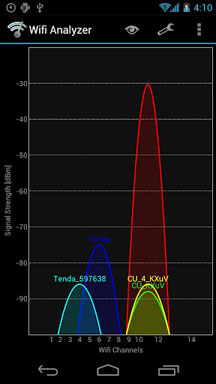
One of the first things to do when optimizing WiFi is to reduce or eliminate interference. Unlike working with cable in a wired network, you cannot easily control the transmission medium of WiFi, wireless waves. There will probably be some kind of interference you face, whether from other nearby WiFi networks, co-channel interference from your own network, or non-WiFi signals in the same radio spectrum.
Start with the easiest controllable co-channel interference, which is interference caused by two or more WiFi access points using the same or overlapping channels. Although most APs have an automatic channel function that is supposed to choose the best channel, double-check their options.
Co-channel interference is a bigger problem in the 2.4GHz band than in the 5GHz band. There are 11 channels in the 2.4GHz band, but only 3 that don't overlap: 1, 6 and 11. In the 5GHz band, there are up to 24 channels and they don't overlap if the old 20MHz channel width is used. Although some APs do not support all channels, and larger channel widths cause some overlap, the 5GHz band is more comfortable.
When testing channels on smaller networks, such as those with 6 APs or less, you can use a free WiFi stumbler (software application that will help you find nearby wireless networks) on your laptop or Android device. These simple apps scan the airwaves and list basic details about nearby wireless APs and routers, including channel usage.
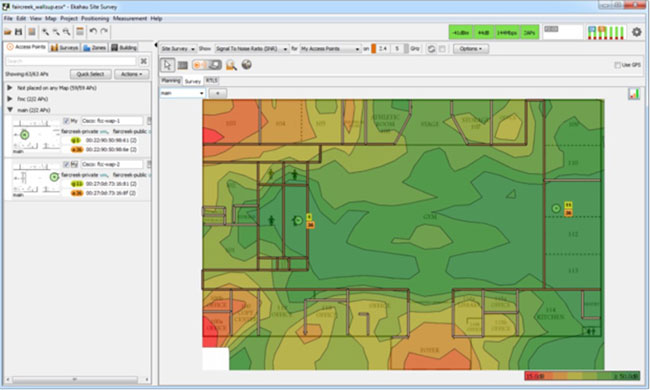
For larger networks, consider using a map-based WiFi survey tool like those by AirMagnet, Ekahau, or TamoGraph during deployment and routine testing. Along with capturing WiFi signals, these tools allow you to run a full scan of the RF spectrum looking for signals that are not interfered with by WiFi.
For continuous interference monitoring, use any of the functions built into the AP that will alert you to rogue APs and/or other interference.
Map-based WiFi survey tools often offer some automated channel analysis and planning features. However, if you're doing a survey on a smaller network with a simple WiFi failure, you'll have to manually create a channel plan. Start by assigning channels to APs on the outer edge of the coverage area first, as that's where interference from neighboring wireless networks is most likely. Then, select the location where interference is most likely to occur from your own APs to conduct the analysis.
2. Use 5GHz and Band Steering
The 5GHz band offers more channels than the 2.4GHz band, so we recommend using dual-band APs that also support 5GHz. This allows older WiFi devices to connect on a lower band and newer dual-band devices to connect over a higher band. Less congestion on lower bands generally means faster connections, and devices in higher bands generally support higher data rates, both of which help reduce device airtime. While not all new WiFi devices are dual-band, more and more devices, especially smartphones and higher-end tablets, are equipped with this feature.
In addition to supporting the 5GHz band, consider using any band navigation functionality provided by the APs. This can encourage or force dual-band devices to connect to a higher band instead of leaving it up to the device or user.
Many APs only allow you to enable or disable band control, while some also allow you to configure signal thresholds, so dual-band devices will have a stronger signal on the 2.4 band. GHz is not forced to use the 5GHz band. This is useful because 5GHz offers a shorter range than 2.4GHz. If your AP supports it, try using a signal threshold setting, which offers a good compromise between reducing congestion on the 2.4GHz band, while providing users with the best signal.
3. Use WPA2 and/or WPA3
It is well known that WEP security is not secure, although almost all APs still support it. WiFi Protected Access (WPA) is more secure, but depends on the version used. Remember that when using the first version of WPA, the data rate on the wireless network was limited to 54Mbps, the maximum speed of the older 802.11a and 802.11g standards. To make sure you can take advantage of the higher data rates provided by newer devices, use only WPA2 and / or WPA3 security.
4. Reduce the number of SSIDs
If you have more than one SSID configured on the APs, keep in mind that each virtual wireless network must broadcast beacons (small wireless transmitters, which use Bluetooth low energy technology to send signals to devices) Other smartwatches nearby) and separate management package. This consumes more airtime, so use multiple SSIDs sparingly. A private SSID and a public SSID are certainly acceptable, but try to avoid using a virtual SSID to do things like separate wireless access by department.
If network segregation is required, consider using 802.1X authentication to dynamically assign users to VLANs when connecting to the SSID. This way, you can only need a separate SSID, but at the same time keep the wireless traffic separate.
5. Do not hide the SSID
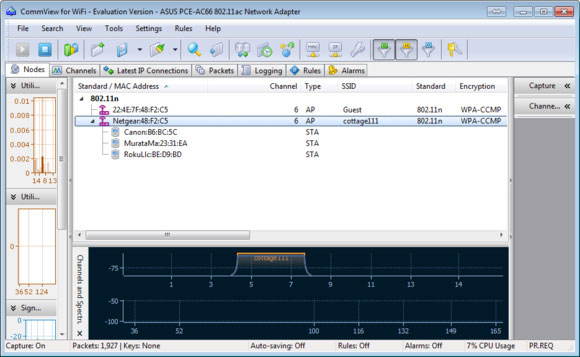
You may have heard that hiding the network name by disabling the SSID in the beacon broadcast can help with security. However, it only hides the network name from normal users; Most devices will show that there is an unnamed network nearby. Also, anyone with WiFi analyzer can usually detect the SSID, as it will still be present in some managed traffic.
Hiding the SSID also creates additional management traffic on the network, such as probe requests and responses, which takes up more airtime. Furthermore, hidden SSIDs can be confusing and time consuming for users as they have to manually enter the network name when connecting to WiFi. Thus, this security approach actually does more harm than good.
A more beneficial security technique is to use the Enterprise mode of WPA2 and/or WPA3. If you find that not all devices on your network support Enterprise mode or are too difficult to set up, make sure you have a long and strong passphrase with mixed characters, including uppercase letters. and lowercase. Also, consider changing the passphrase periodically and after any user leaves the organization or loses a WiFi device.
6. Disable standards and lower data rates
While modern WiFi devices can support speeds above 1Gbps, APs can transmit as low as 1Mbps in the 2.4Ghz band and 6Mbps in the 5Ghz band for certain traffic. In general, the farther you move from the AP, the lower the signal and data rate.
However, even when network coverage and signal are excellent, most APs by default send management or multicast traffic, such as SSID beacons, at a very low rate instead of at the same maximum data rate as when sending normal data traffic. Increasing the minimum or multicast data rates of APs can force management traffic to be sent at a faster rate, reducing overall airtime efficiency.
This technique can also help devices automatically connect to better APs quickly. For example, some devices by default may not find another AP to roam until they have completely lost connection with the AP they are currently connected to. That may not happen until the device has moved as far as the minimum signal and data rate supported by the AP. So if you increase the minimum data rate, you will essentially shorten the maximum coverage of each AP, but increase the overall network performance.
There is no recommended minimum data rate that all networks should use. That decision depends on the network's own coverage and client capabilities, among many other factors. However, keep in mind that by disabling lower data rates, you can always disable support of older wireless standards. For example, if you disable all data rates of 11Mbps or less, this will prevent the use of 802.11b devices, since the maximum data rate for that standard is 11Mbps.
For most networks, disabling 802.11b support is acceptable, but you may not want to completely disable the next standards: 802.11a and 802.11g, which reach 54Mbps. So the highest data rate you should consider disabling is 48Mbps, still allowing the old 802.11a/g/n standards to be used.
7. Correct channel width configuration
As mentioned above, there are different channel widths that WiFi can use. In general, the larger the channel width, the more data can be sent at once and the less airtime will be used. The 802.11b/g standards only support 20MHz channel widths, 802.11n adds support for 40MHz, and 802.11ac and 802.11ax add support for 80MHz and 160MHz channel widths.
Since the 2.4GHz band is so small, and to support 802.11g, you'll want to keep the 20MHz channel width in that band. For the 5GHz band, consider using automatic channel width settings. While forcing to use 80MHz or 160MHz channels will allow faster data rates with 802.11ac and 802.11ax devices, it is not a good approach for most networks as it will prevent those devices from getting worse. Dual-band 802.11n connects within that band.
8. Shorten packet size and transmission time
There are multiple packet sizes and transmission times for certain traffic can be reduced to help increase speed and reduce airtime. If available on your APs, they can be changed in the advanced radio/wireless settings. While you may only see a slight increase in performance for each individual tweak, you can see a noticeable difference when you combine them.
- If you don't have any 802.11b clients, you can enable Short Preamble Length to shorten the header information on the packet.
- Enabling Short Slot Time can reduce the time for any retransmission.
- Short Guard Interval shortens packet transmission time, which can increase data rate.
- Frame Aggregation allows sending multiple frames in a single transmission, but use caution: This may cause compatibility issues with Apple products.
9. Upgrade to WiFi 6 (802.11ax)
Disabling support for legacy wireless standards can help speed up management traffic and help tie slow devices to a better AP. But using older standards also slows down data rates for all traffic, even for devices that use newer standards.
If you have any devices on your network that only support 802.11b, g, or n (WiFi 4), consider upgrading to at least dual-band WiFi 5 (802.11ac) or preferably WiFi 6 Although it is often possible to upgrade the internal WiFi of a laptop or desktop computer, there is a faster, easier method than adding a USB wireless adapter.
If your APs are older than WiFi 5, so far you've followed the advice and are still experiencing speed difficulties, then try upgrading your APs. If you're considering WiFi 6 APs, you may need to make changes to network components, so you'll want to verify the specs of other network devices, such as routers, switches, and PoE infrastructure.
Always remember that airtime is very important on wireless networks. While you may not necessarily want ultrafast WiFi, reduced airtime and increased speed may be required to support networks with high or very large usage.
If coverage is acceptable on your network, first try the techniques discussed here before adding or changing the location of APs. There may be a reason for the poor performance that needs to be addressed or other ways to increase performance with simple settings changes.
Since there are so many variables with WiFi, it's sometimes easy for users to blame it as the real causes stem from a general network issue. For example, if the wireless network is slow, the real problem may be with the Internet connection or it may even be due to a misconfiguration like low bandwidth limit on the APs.
You should read it
- How to speed up Wifi network, increase WiFi signal
- Learn about Wifi AD, speeds up to 4.6 Gbps, potentially replacing cables
- 7 things affect the speed of WiFi network
- Select the location of the router to increase the Wifi wave
- 8 ways to increase Wifi speed for laptops
- [Tips] Some tips to speed up the most effective WiFi connection
- Top 6 best 3G / 4G mobile WiFi transmitters
- Android 8.1 will indicate whether WiFi is strong or weak before connecting
- Qualcomm revealed new WiFi technology three times faster than it is today
- How to speed up Wifi hotspots on Android phones
- Where is the fastest speed in the world?
- Instructions for use and security of Wifi network
May be interested

Wifi Extenders for Gaming: Do They Work?

Should I choose a 1-band or dual-band Wi-Fi router?

How to fix WiFi authentication issues on Android phones

How to create and connect to WiFi with QR Code extremely fast

How to fix the problem of not connecting to WiFi in Windows 10

Wrong router placement makes Wi-Fi weak





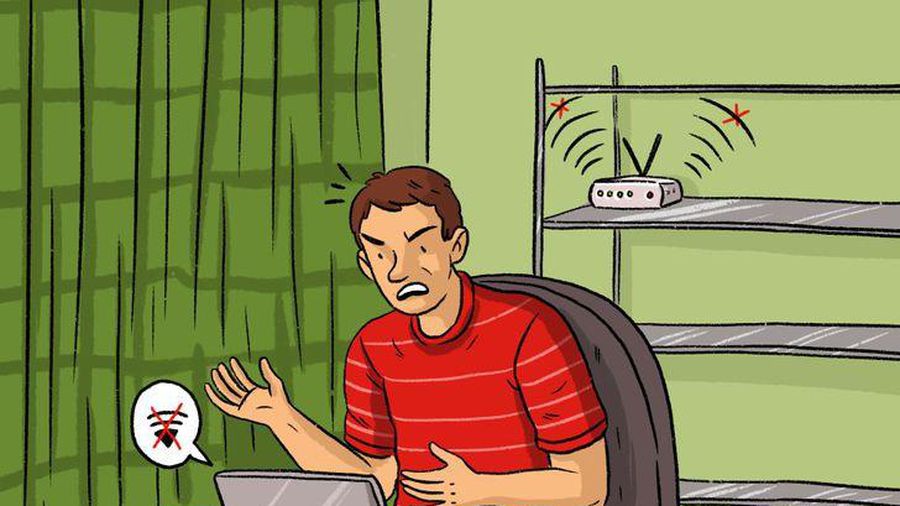
 How to speed up Wifi network, increase WiFi signal
How to speed up Wifi network, increase WiFi signal Tips to maximize wifi speed that no one told you
Tips to maximize wifi speed that no one told you 7 things affect the speed of WiFi network
7 things affect the speed of WiFi network![Photo of [Tips] Some tips to speed up the most effective WiFi connection](https://tipsmake.com/data1/thumbs_80x80/[tips]-some-tips-to-speed-up-the-most-effective-wifi-connection_thumbs_80x80_bm4409sSm.jpg) [Tips] Some tips to speed up the most effective WiFi connection
[Tips] Some tips to speed up the most effective WiFi connection Select the location of the router to increase the Wifi wave
Select the location of the router to increase the Wifi wave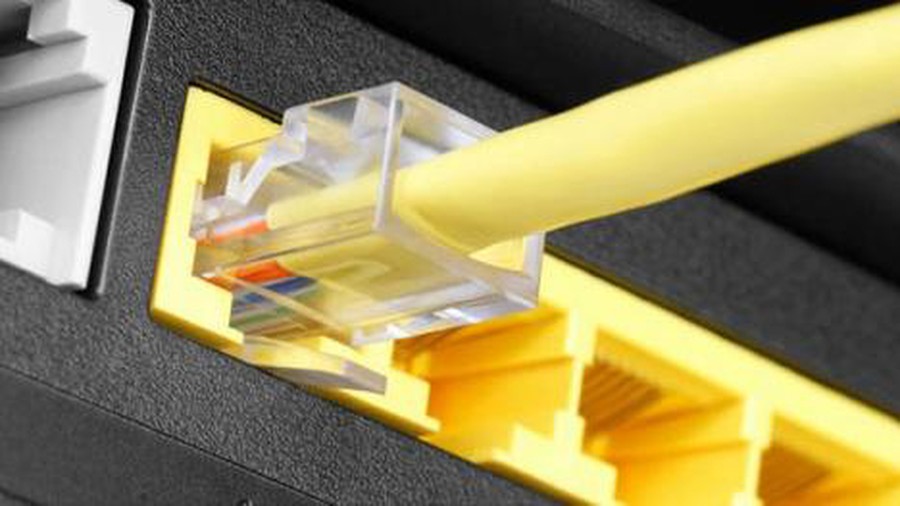 Tricks to improve wifi network security
Tricks to improve wifi network security